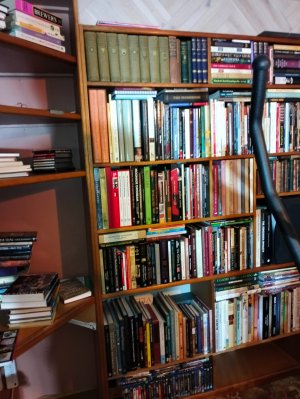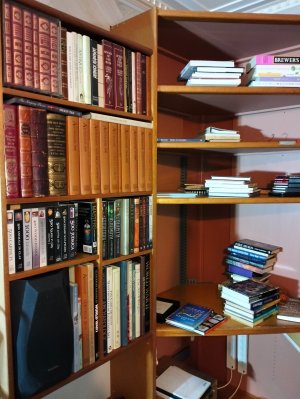The units all have a plinth at the bottom so I'd planned the verticals to run bottom to the top but with the top of the unit spanning the full width. I was then going to fix an oak batten to the underside of the top shelf with pocket screws and then screw through that into the wall. Then probably repeat that below one of the middle shelves. I guess I could also do another one below the lowest but one shelf as this would be out of sight?(sorry, hit Save accidentally too soon)
With a 9.5" board, you're losing 4", so putting 5 "things" into 5.5" seems pretty tight. Maybe just 2 of each, and maybe:
Front of Unit -- Connector -- Domino -- Connector -- Domino -- Back of Unit
I think some of what I'd do depended on how the unit is attached to the wall. Given it doesn't have an attached back, I'd be careful about what's supporting what.
So, first thing is I'd make the bottom the full width, with the vertical sides resting on top of it. That way, at least, you could attach the bottom to the wall and it would support the bookcase in compression, rather than tension. Tension would rely on the connectors/glued dominos, and I think it's better to have mechanical support.
But, you're also going to want to attach the top and/or the sides as well so that the bookcase doesn't fall forward. L-brackets are ugly unless they're hidden somehow.
The more I think about it, the more I regret taking this on. A lot to handle for a one man band. Good learning curve!


